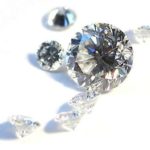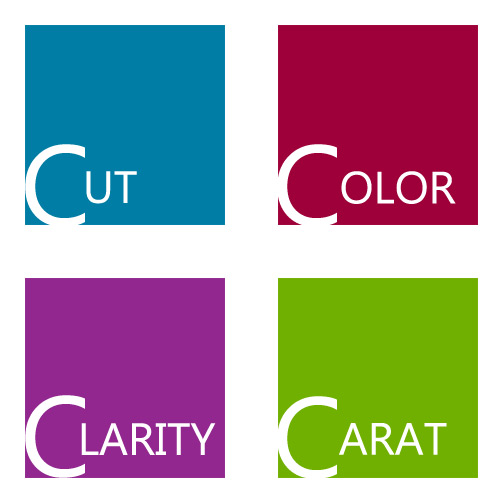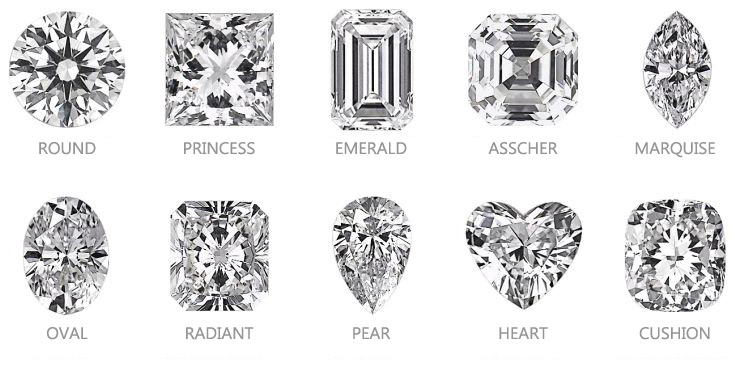 Curious about diamonds? There is a LOT of information about diamonds already on the internet. So, rather than re-inventing the wheel here, I’ll just point you in a trustworthy direction of really good information that I found. Here’s a short overview of the basics, with very resourceful links at the bottom.
Curious about diamonds? There is a LOT of information about diamonds already on the internet. So, rather than re-inventing the wheel here, I’ll just point you in a trustworthy direction of really good information that I found. Here’s a short overview of the basics, with very resourceful links at the bottom.
Cut
While cut can refer to the shape of the cut (round, princess, pear, etc.) it also refers to the proportions of how the diamond is actually cut. The consistency and balance of the way a diamond is cut can have a huge impact on how the diamond captures and reflects light.
Color
Though Diamonds are considered colorless, they can have a natural occurrence of light yellows and browns. How much color they display is graded on a scale from D (completely colorless) to Z (visibly yellowish or brownish), each color grade generally show more saturation of color. Anything beyond a ‘Z’ grade is considered a Fancy Colored Diamond. Diamonds can be found in every color, and good quality colored diamonds are very rare.
Clarity
Diamond clarity is a quality of diamonds relating to the existence and visual appearance of internal characteristics of a diamond called inclusions, and surface defects called blemishes. There are many types of inclusions. I found this great resource that shows you a magnified example of these types of inclusions and blemishes. (See Here: http://gemfacts.com/grading/slides.htm?id=1) Clarity is graded on a scale from Flawless all to way to I3.
Here’s a table from Stuller.com describing basically what each grading could mean.
| FL, IF Diamonds | Flawless: No internal or external flaws Internally Flawless: No internal flaws |
| VVS1, VVS2 Diamonds | Very, Very Slightly Included: Very difficult to see inclusions under 10% magnification. |
| VS1, VS2 Diamonds | Very Slightly included: Inclusions are not typically visible to the unaided eye, |
| SI1, SI2 Diamonds | Slightly included: Inclusions are visible under 10× magnification and may be visible to the unaided eye. |
| I1, I2, I3 Diamonds | Included: Inclusions are visible with the unaided eye. |
Carat
Carat Weight, often abbreviated to ct, or tcw (total carat weight) is the actual weight of the diamond. One carat is equal to .20 grams. Carat weight is also subdivided into points. There are 100 points to a carat. A half (1/2) carat diamond is 50 points. A diamond that’s .91 points, is just under a full carat. Prices will increase dramatically with size. One 2 carat diamond is more expensive that two 1 carat diamonds of the same quality. Also remember that TCW is the total carat weight of all the stones. Let’s say you have earrings that are 1 ct. total weight. That’s 1/2 carat in each earring totaling 1ct.
Hope this helps!
If you’re looking for a diamond or diamond ring(s), we can help. Many of our diamonds are bought “off the street,” meaning, we buy them locally then have them appraised by a top GIA certified individual enabling us to give you a better diamond for less than the big box jewelry stores. We can also order specific quality diamonds from our reputable dealers. Stop by anytime to speak with one of our Jewelers. Or call us!
Resources:
http://gemfacts.com/grading/Default.aspx
http://www.gia.edu/diamond#buyers-guide
http://www.stuller.com/articles/view/the-four-cs-of-diamonds/






